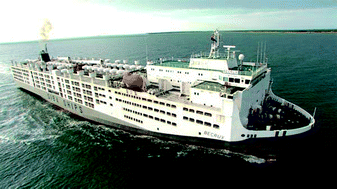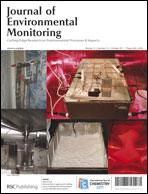Noxious gases on ships are irritant pollutants that have potential impacts on the comfort and health of both livestock and humans. Identification of environmental influences on the pollutants will assist live exporters to control them. Ammonia, hydrogen sulphide and carbon dioxide, as well as wet and dry bulb temperature, dew point, air speed and depth of faeces that the sheep stood in, were measured on two ship voyages in which sheep were transported from Australia to the Middle East. Daily measurements were made at 20 measurement locations over 12 days. At four sites, the mean ammonia concentration for the voyage was above the recommended maximum limit for the live export industry (25 ppm). The mean ammonia concentrations at the remaining 16 sites were below 18 ppm and considered safe. High ammonia concentrations were localised and occurred particularly on closed decks, as well as at the front of the vessel and near the engine block on open decks. Ammonia concentration on the open decks was correlated with cumulative wind during the voyage, air speed, dew point, wet bulb temperature and faecal pad depth, and on the closed decks with dew point, and wet and dry bulb temperature. Hydrogen sulphide (<1.8 ppm) and carbon dioxide (<1900 ppm) concentrations were low and did not pose a risk to animal or human welfare or health. The results suggest that high ammonia concentrations occur in those parts of the ship where there is insufficient ventilation and/or high temperatures and humidity.

You have access to this article
 Please wait while we load your content...
Something went wrong. Try again?
Please wait while we load your content...
Something went wrong. Try again?


 Please wait while we load your content...
Please wait while we load your content...